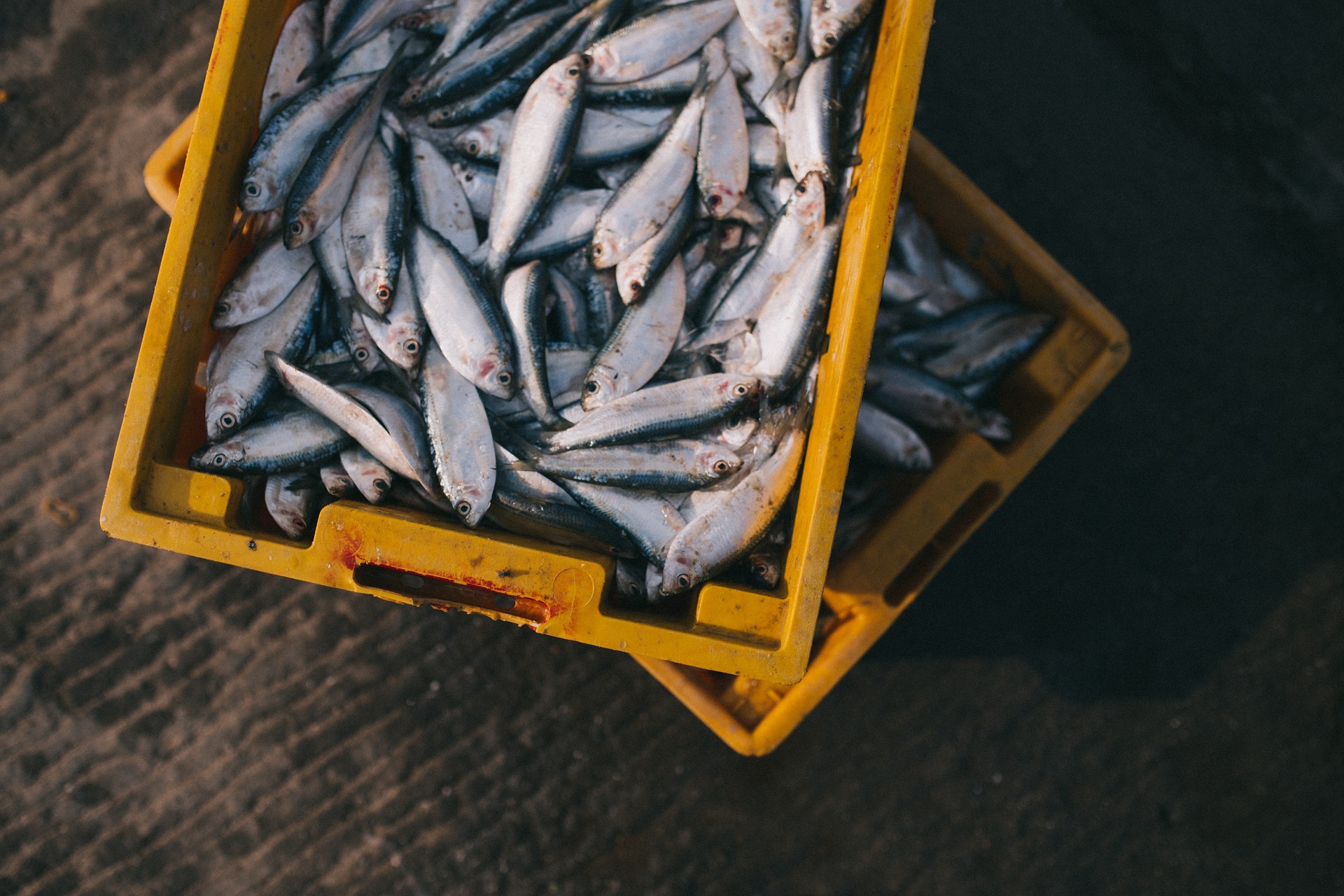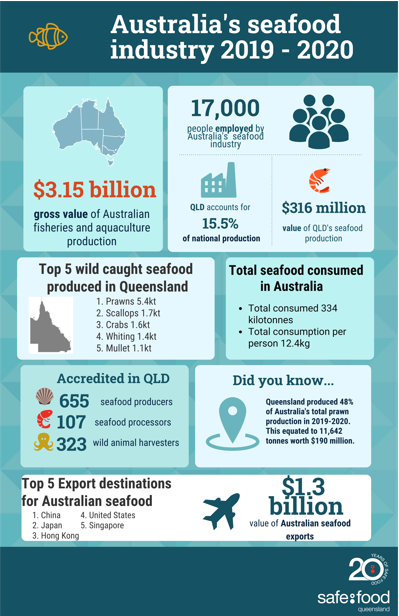Australians love their red meat and poultry but seafood is fast catching up in terms of popularity and has always been an important part of Australian culture and diet. About 334 kt of seafood was consumed in Australia in 2019-2020, which equated to about 12.4 kg per person. In the hearts, minds and stomachs of Australian consumers, seafood slots in at number four, behind beef, pork and poultry but higher than sheep or lamb.
From fish and chips to clam chowder, those who love their seafood really love it. According to a 2019 survey, frequent eaters (who eat seafood at least once a week) accounted for 33% of consumers but this group consumed 77% of the total seafood pie, so to speak.

What’s drives our seafood choices?
The data is in and seafood choice among consumers is not purely economic. A survey of more than 2000 adult grocery buyers in 2019 found that price was important to consumers but was not the key driver of seafood consumption. Consumers reported that freshness and food safety were more important than price, but that price was more important than quality (whether it was fresh or frozen) and presentation.
Value of our seafood industry
The gross value of fisheries and aquaculture production in Australia in 2019-2020 was $3.15 billion. Queensland contributed 15.5% or $316 million. Queensland however, contributed 48% of the nation’s prawn catch at nearly 11,642 tonnes worth $190m.
The seafood industry in Australia provides employment for almost 17,000 of people in fisheries and aquaculture, associated seafood processing and indirectly through flow-in business activity in other sectors.
The role of Safe Food Production Queensland
As the Queensland Government statutory body responsible for seafood and other primary production, Safe Food works alongside industry to ensure that Queensland’s food production systems meet national standards and consumers can have confidence in Queensland produce. It’s also important that businesses along the food supply chain know and understand their responsibilities and potential threats are identified and dealt with decisively.
Under the Seafood Scheme, Safe Food provides accreditation for fishers, producers, processors and storage facilities. These include:
- commercial fishing boats
- aquaculture activities
- land-based seafood processors
- oyster growers
- oyster pickers
- seafood storage (cold storage and live holding).
There are four accreditation categories under the Seafood Scheme. These are:
- Wild animal harvester – those who harvest and supply whole, live product
- Producer – most aquaculture and cold storage facilities fit in this category. It also applies to commercial fishing boats that undertake limited processing on board.
- Processor – all land-based processsors of seafood that is wholesaled
- Temperature controlled storage
Safe Food Production Queensland’s statistics (as at October 2021) revealed there were 1102 seafood industry accreditations comprised of:
- 655 producers
- 107 processors
- 323 wild animal harvesters
- 17 temperature-controlled storage facilities
How consumers can contribute to the economy and sustainability: buy local
Australia is an internationally recognised world leader in sustainable fisheries management. Consumers can play their part in encouraging sustainable and responsible fisheries and aquaculture management by buying and eating local Australian seafood where possible.
Buying local produce also benefits the buyer, seller and everyone in between. The buyer enjoys fresh and delicious seafood, local businesses profit and create more jobs, and professional fishers, producers, processors and harvesters can continue to support their families.

https://www.awe.gov.au/abares/research-topics/fisheries/fisheries-data#fisheries-and-aquaculture-outlook-2021
https://www.agriculture.gov.au/abares/research-topics/fisheries/fisheries-and-aquaculture-statistics/seafood-consumption-2018#australian-seafood-consumption-ranks-behind-beef-chicken-and-pork-but-ahead-of-lamb-and-sheep-meat
https://frdc.com.au/fish-vol-27-3/seafood-consumers-open-options
